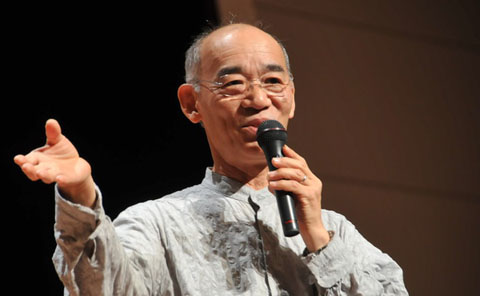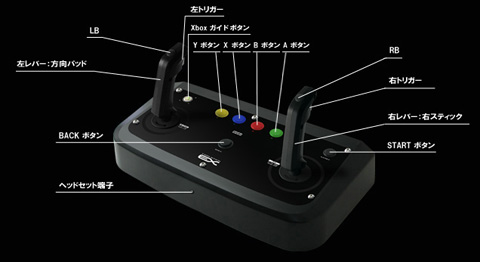Posted on : 14-09-2009 | By : Cacophanus | In : News
Posted on : 10-09-2009 | By : Cacophanus | In : News

Here is the latest promo video for the upcoming PSP game Macross Ultimate Frontier. This is the sequel to the previous Macross Ace Frontier, also developed by Artdink (who in turn have helmed the Gundam Battle series as of late, though the older of us will most probably remember them for making Carnage Heart). Ultimate Frontier boasts even more variable fighters to choose from now and the addition of several extra Macross series (notably that of Macross Dynamite 7, Macross Zero and the somewhat ill-fated Macross II). The game is out at the beginning of October in Japan and like the previous game it most likely won’t make the jump abroad, as the rights surrounding Macross are quite awkward (courtesy of Robotech and Harmony Gold). The music in the video is also a new Fire Bomber track made specifically for the game as well, as anything involving Yoshiki Fukuyama makes everything so much better.
Spoiler
[flash http://www.youtube.com/watch?v=sRmVANkM2GY]
[collapse]



Posted on : 09-09-2009 | By : Cacophanus | In : News
Posted on : 09-09-2009 | By : Cacophanus | In : News

At the recent CEDEC conference venerable anime director and writer Yoshiyuki Tomino weighed in on the state of games. Now, Tomino is all about the context of his statements and whilst he proclaimed games to be “evil” this was wholly meant in relation to a game’s creative worth. In that, without the creative quality to back up a game’s existence it’s very much a waste of resource and hence “evil”. He cited Tetris as qualitative benchmark to this and that functionally games haven’t really outmoded this, which is actually pretty accurate. So his comment was in relation to games themselves and not something unrelated.
Naturally, a few places have got a little carried away and focused purely on the “evil” comment without comprehending the context of his speech. Some have even gone as far to think Tomino actually hates games, which is pretty facile considering the fact he wrote and directed Overman King Gainer in which the main protagonist is a very skilled gamer and hence able to pilot the titular mecha. Finally, some have said the comment is hypocritical in relation to the creation of multiple Gundam games over the years but Tomino has no involvement in these tie-in games whatsoever so the linkage is not at all valid to be honest.



Posted on : 09-09-2009 | By : Cacophanus | In : News
Posted on : 09-09-2009 | By : Cacophanus | In : News

Back around the time of Armored Core 2, there were a fair few issues with the game not only in terms of its pretty awful frame rate but also in regards to the unbalanced parts list when it came to human versus. One part in particular, the Karasawa Mk2, was cheese incarnate. In the original Armored Core the Karasawa was a meaty laser rifle that fired needle like shots of immense power, to the extent that it could kill an enemy AC with around 10 shots (it had a total capacity of 50 in case you’re curious). In Armored Core 2 it kept the shot potency but also increased the shot velocity and also had an additional stun for each shot. This meant all you had to do was land the first shot and the Mk2 would take care of the rest.
Fast forward to today and the upcoming PSP port of Armored Core 3 Silent Line now features an almost identical inclusion of that dreadful weapon (though with a slightly reduced ammo capacity). The weird thing is that Silent Line already had it’s own Karasawa, so having another is a bit of an overkill. Whether this will unbalance the new port as much as it did with Armored Core 2 remains to be seen however.



Posted on : 08-09-2009 | By : Cacophanus | In : Features
 There are few games developers in the world that engender such a fan driven fervour as Treasure. Their games are revered in an almost monolithic sense, beacons of taut gaming functionality they distill the mechanics of a game into something palpably cogent. However, there are a few instances amongst their creative portfolio that have wider cultural leanings.
There are few games developers in the world that engender such a fan driven fervour as Treasure. Their games are revered in an almost monolithic sense, beacons of taut gaming functionality they distill the mechanics of a game into something palpably cogent. However, there are a few instances amongst their creative portfolio that have wider cultural leanings.
I am, of course, referring to Bakuretsu Muteki Bangai-O. A series of games featuring the titular mecha, Bangai-O, as it sprays a colourful 2D world with a vast array of homing missiles and lasers. The initial functional impetus for the game was outed as being that of the Sharp X1 title Hover Attack but in a more recent interview, this was merely a partial catalyst as it became clearer that the main influences took on a far greater role.
Specifically, three anime series were cited in the interview; Macross, Layzner and Ideon. For those that have been reading the column regularly, I’ve already covered the effect of each of these series (here and here). Now it’s time to see how these influences actually manifest themselves in a gaming series such as Bangai-O.



Posted on : 08-09-2009 | By : Cacophanus | In : Features
 In December of 1999, SEGA released a nigh-on arcade perfect port on their ill-fated Dreamcast for Virtual On Oratorio Tangram. Like the Saturn port of its precursor, it also featured a bespoke controller to emulate the arcade version’s original setup: a pair of twinsticks. It was critically lauded by almost all Japanese (and many Western) publications and did quite well in terms of sales too.
In December of 1999, SEGA released a nigh-on arcade perfect port on their ill-fated Dreamcast for Virtual On Oratorio Tangram. Like the Saturn port of its precursor, it also featured a bespoke controller to emulate the arcade version’s original setup: a pair of twinsticks. It was critically lauded by almost all Japanese (and many Western) publications and did quite well in terms of sales too.
The thing with the Virtual On series though is that they’ve always been focused around human multiplayer. In that regard they are practically peerless. As to their singleplayer “experience”; it’s almost been an oversight.
Even Hajime Katoki’s mecha design was forcibly restrained for the various Virtuaroids, as the 1995 original had very stringent polygon counts which set the aesthetic. The first two Virtual On games in fact are almost exercises in functional minimalism.
Yet Virtual On, as a series, has had a remarkable amount of design-based progeny over the years but in the case of Oratorio Tangram such “offspring” would only be a few years away.
Cue Hideo Kojima…



Posted on : 07-09-2009 | By : Cacophanus | In : Reviews











 In December of 1999, SEGA released a nigh-on arcade perfect port on their ill-fated Dreamcast for
In December of 1999, SEGA released a nigh-on arcade perfect port on their ill-fated Dreamcast for  Normally, in the history of Armored Core, the subsequent releases within the numerical classification are broader in scope and obviously more polished. Master of Arena had a customisable AI setup called Ranker Mk, Silent Line had an organic learning AI and an enormous amount of parts. Yet all these improvements were off the base release that preceded it. Admittedly, I am selling the earlier games a tad short but compared to For Answer, the improvements were linearly obvious.
Normally, in the history of Armored Core, the subsequent releases within the numerical classification are broader in scope and obviously more polished. Master of Arena had a customisable AI setup called Ranker Mk, Silent Line had an organic learning AI and an enormous amount of parts. Yet all these improvements were off the base release that preceded it. Admittedly, I am selling the earlier games a tad short but compared to For Answer, the improvements were linearly obvious.






